Death Valley National Park is the hottest, driest and lowest National Park in North America. I visited Death Valley first about ten years ago on my way home to San Francisco after a backpacking trip to Inyo National Forest. During that first visit, I spent only one night in Death Valley National Park. The only thing I remember from the trip is the blanket of stars that sparkled down at us as we lay in our sleeping bags in a parking lot that night. I must have seen at least four to five shooting stars! An unforgettable night indeed.
I recently went back to Death Valley to re-discover the park from a photography and hiking perspective. Below is everything you need to know when visiting Death Valley National Park right now.
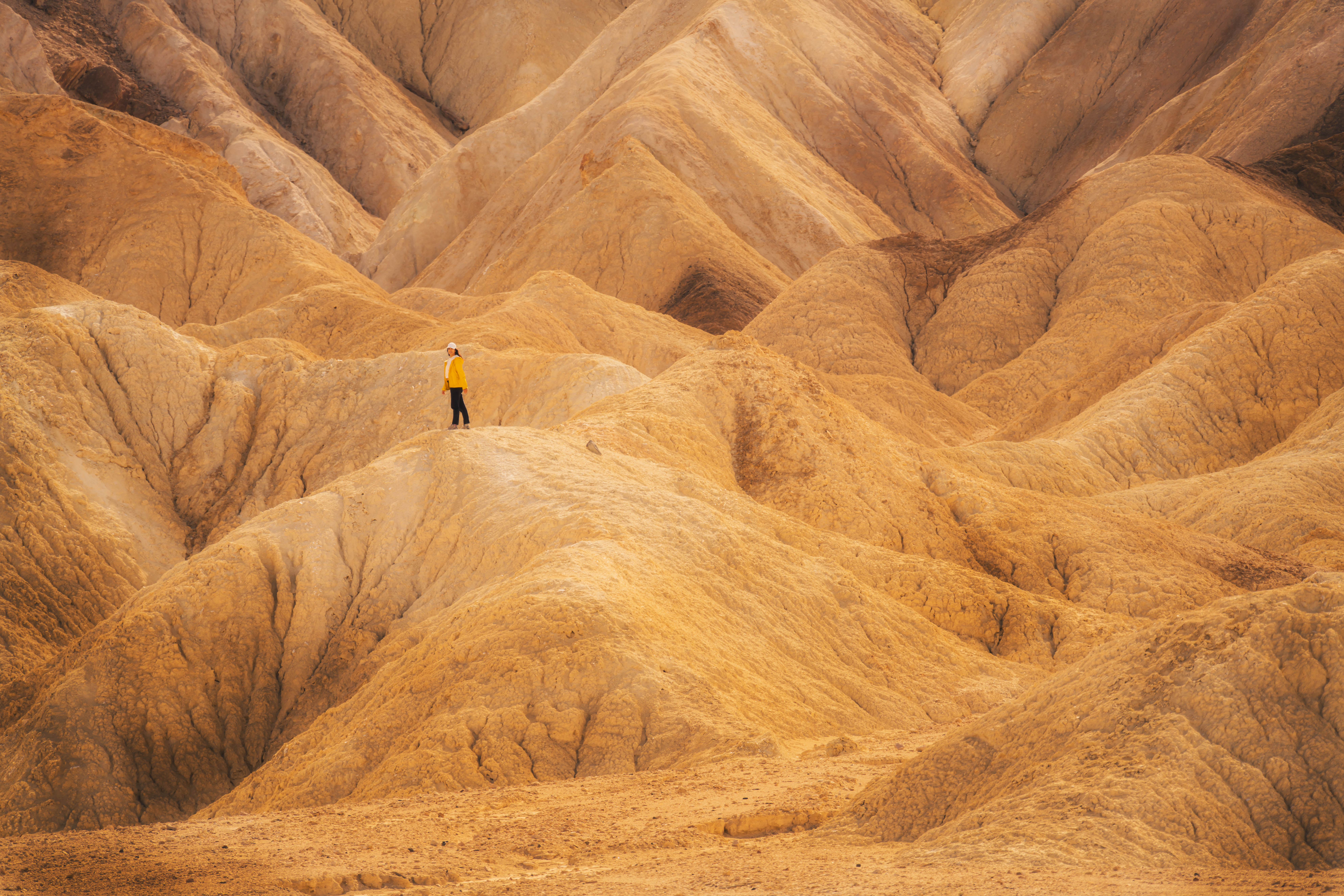
Where Is Death Valley National Park
When visiting Death Valley National Park, you will need to plan your trip carefully. There is no cell service inside the park. Death Valley National Park is located in both California and Nevada. From the Bay Area, you can drive approximately 8 hours to Death Valley. You can also fly to Las Vegas and take a 2hr15min road trip to Death Valley.
Where To Stay When Visiting Death Valley National Park
As of January 2021, campgrounds were closed at Death Valley. Check the website for latest conditions and road closures. The most convenient place to stay when visiting Death Valley National Park is inside the park. This makes driving to the points of attraction way shorter than if you were to stay outside the park, especially As of January 30th, these hotels inside the park are currently open:
- Stovepipe Wells Village
- The Oasis at Death Valley
- The Ranch at Death Valley
- Panamint Springs Resort
The least expensive option is the Ranch at Death Valley. You can find cheaper alternatives if you stay outside the park in the town of Beatty (45 minutes away from Furnace Creek Visit Center), Pahrump (1.5 hours away from Furnace Creek Visitor Center), or Shoshone (1 hour away from Furnace Creek Visitor Center).
Pro Tip: The Death Valley visitor center is located in Furnace Creek. Dogs are not allowed on trails or in the wilderness. Due to the extreme weather conditions, do not leave your dog in the car.
What To See When Visiting Death Valley National Park
Dante’s View: When visiting Death Valley National Park, Dante’s View is a must see. Currently as of Jan 31, the road to Dante’s View is closed due to snow. The view is remarkable. You will be able to see the 11,000ft Telescope Peak to Badwater Basin at -282ft. There are clear signs for the 13 mile road to Dante’s View. You do not need a 4WD to get here.
Zabriskie Point: Zabriskie Point has an easy to reach parking lot. Once you park here, take the short pathway to the top for spectacular views of the badlands. You will be able to walk amongst the canyons and gulches. You won’t see much vegetation around the slopes. To the northeast you can see Manly Beacon while to the right of the beacon you can see the cliffs of Red Cathedral. You do not need a 4WD to get here.
Pro Tip: Sunrise is the best time to take in the splendor of the scene in front of you. As the soft rising light washes over the peaks of the mountains and canyons, use the path on the right to hike into the canyons.
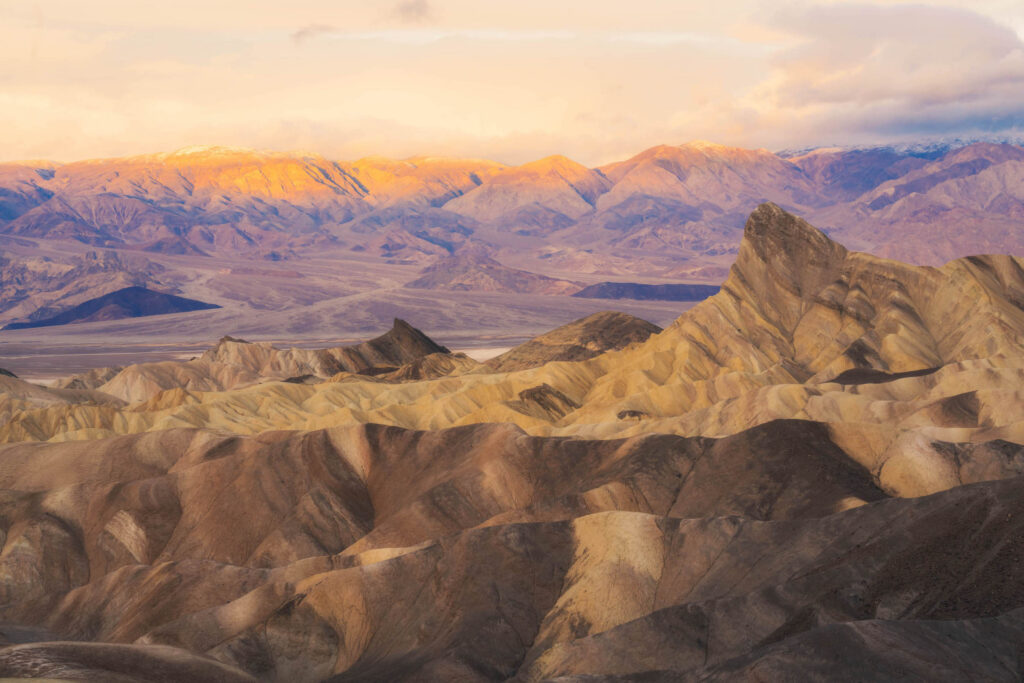

Artist’s Palette: Visiting Death Valley National Park means a drive through Artist’s Drive, a beautiful road that winds its way through an unbelievable area of multicolored, eroded hills. The oxidation of natural metal deposits in the mountains produce lovely shades of green, blue and purple that resemble an artist’s colorful palette, hence the name. Some of the movies shot in Death Valley in this area include Star Wars. You do not need a 4WD to get here.
Pro Tip: To get to this spot, there is an actual parking lot with a sign. It’s the third stop on the drive. It’s a small parking lot, if it’s full, you may need to park (safely) on the side of the road. Make sure to visit an hour before sunrise to watch the changing light. Explore all the little alleys that lead up to the colorful little hills. You can even climb on top of the little hills.
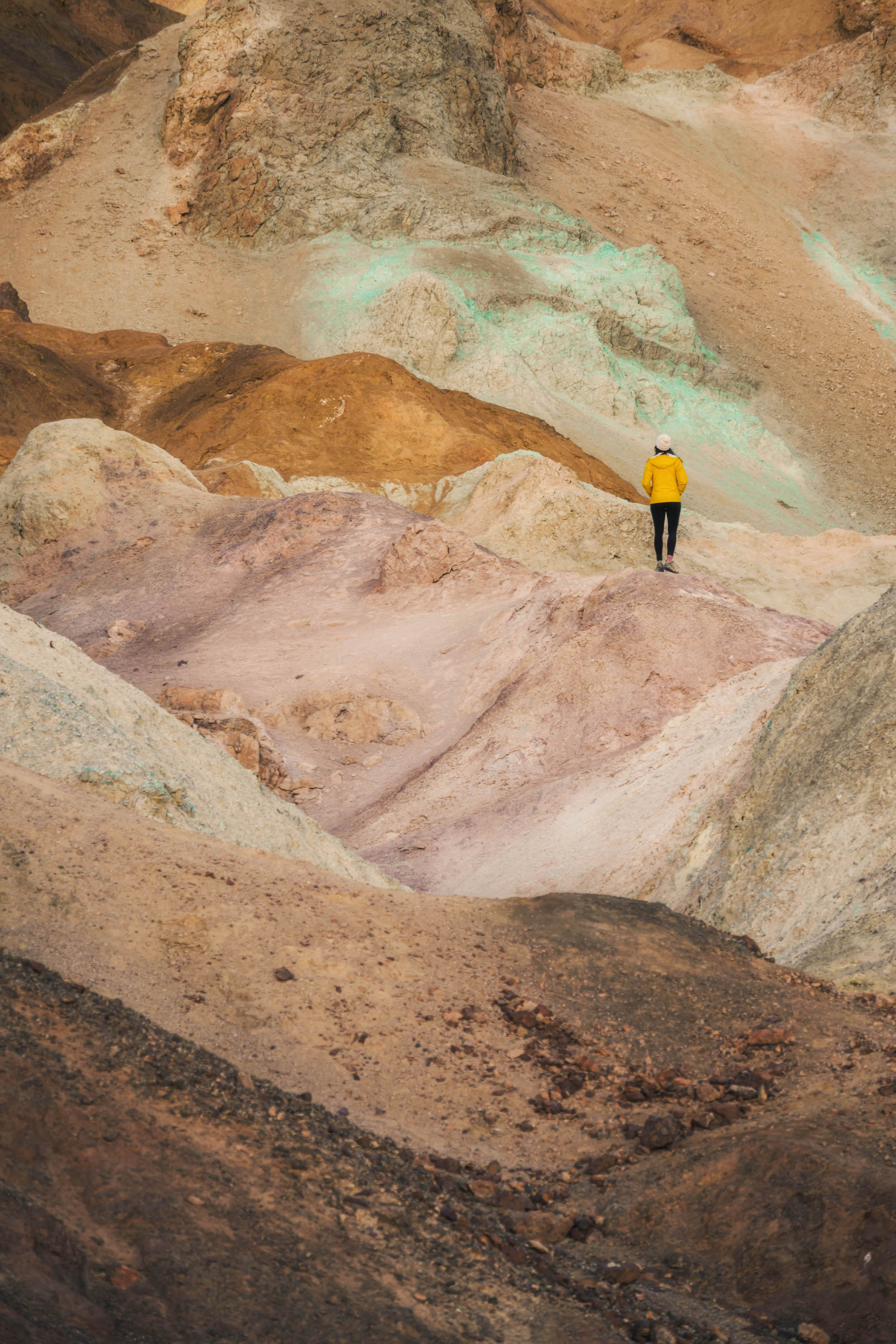

Badwater Basin: Want to go below sea level? Standing in Badwater Basin you will be 282 feet below sea level! At first glance you may think that it’s snow covering the ground in Badwater Basin. But in reality, it’s a thick layer of salt. Rain and minerals dissolved from rocks drain to lower elevations. Here, at Badwater Basin, the water forms temporary lakes after heavy storms. As the water evaporates, minerals concentrate until only the salts remain. After thousands of years, enough salts have settled here at the bottom of the continent to create this vast, surreal scene. You do not need a 4WD to get here.
Pro Tip: Go at least 30 minutes before sunrise. Park in the Badwater parking lot and walk about a mile or two in a straight line on the clearly visible salt path aka boardwalk, past the dark ridges on the ground until you get to the three-dimensional hexagonal outlines caused by changing temperatures and evaporation processes. Take plenty of water and a snack. Stay as long as you want.
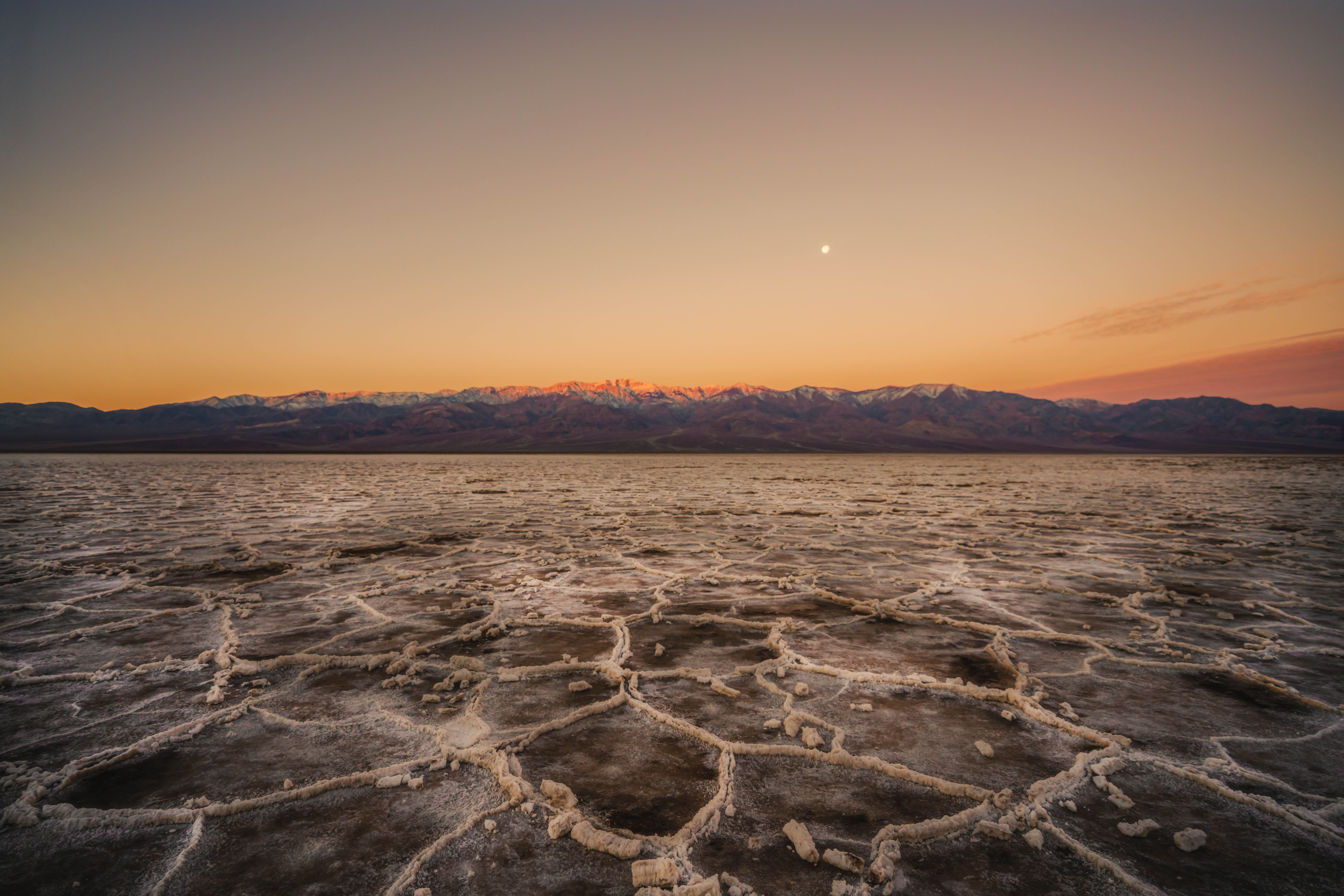

Mesquite Sand Dunes
When visiting Death Valley National Park, Mesquite Sand Dunes is a must. It is the easiest sand dunes to visit and the only one where you can sand board. The parking lot is easy to reach and there’s plenty of sand dunes easily accessible. If you want to go to the higher dunes, be ready for a hike. Eureka sand dunes are much higher at over 680 feet. You do not need a 4WD to get here.
Tip: Sunset is the best time to visit these dunes. The light is incredible and the temperature is more pleasant.
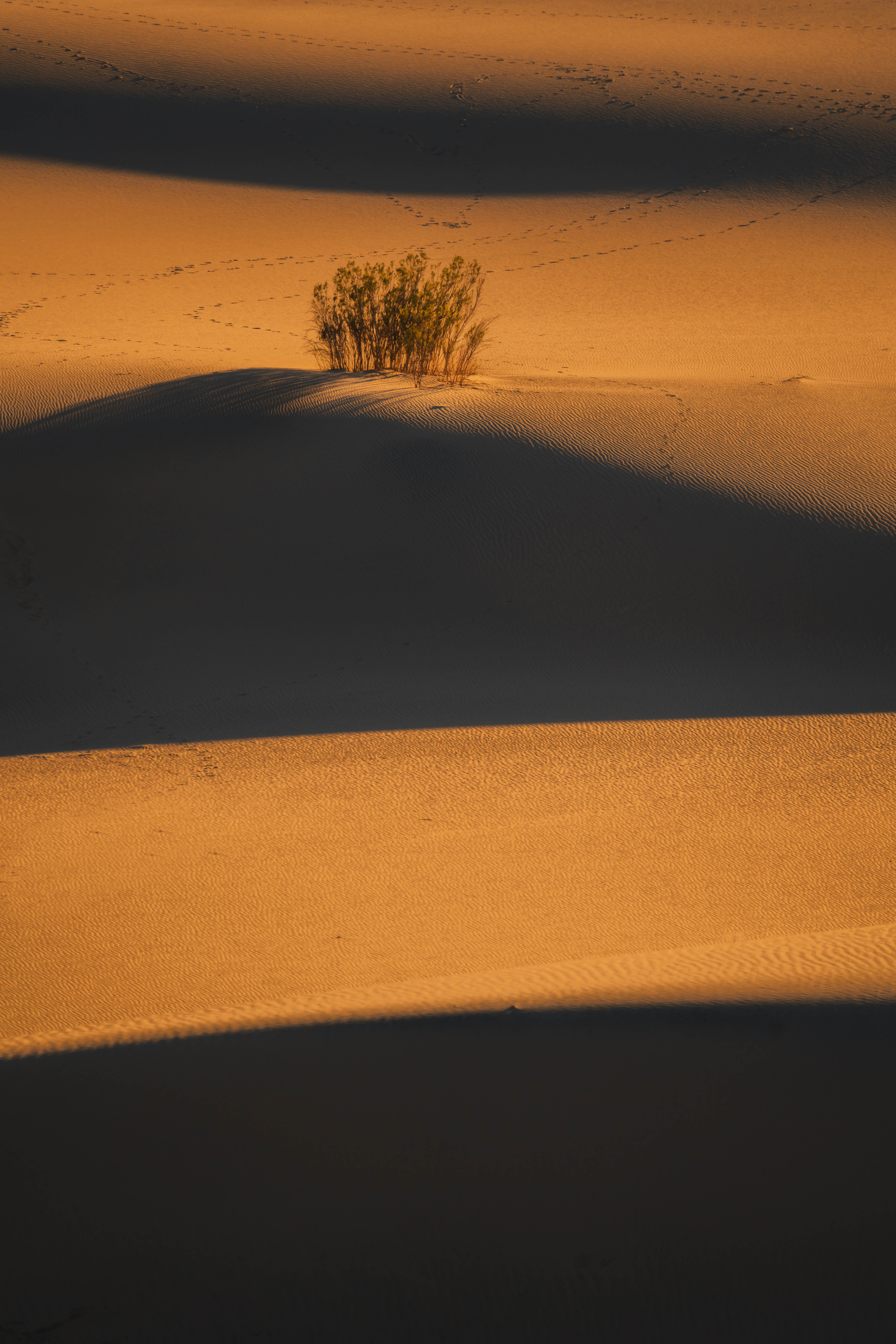

Planning Your Food & Gas When Visiting Death Valley National Park
There are a few places to fill gas inside the park. However, make sure you fill gas in Beatty or Pahrump before you enter the park so you aren’t wasting time looking to fill gas as soon as you arrive. Gas is also more expensive inside the park.
- Furnace Creek: Open 24 hours
- Stovepipe Wells Village: Open 24 hours
- Panamint Springs: 7:00am – 9:30pm
Where To Hike When Visiting Death Valley National Park
- Gower Gulch and Golden Canyon: This is a 5.8 mile loop via the Zabriskie point. It’s best from November to April. The hike is fairly flat (if you’re starting from Zabriskie point) and then starts to climb closer to Golden Canyon. Gower Gulch passes several Borax mines. Borax (called white gold by miners) was extracted heavily in this region in the 1880s and many mine shafts remain – they are however very unstable and should not be explored. Even in January, if the sun is out, the hike can get very hot, so bring lots of water.
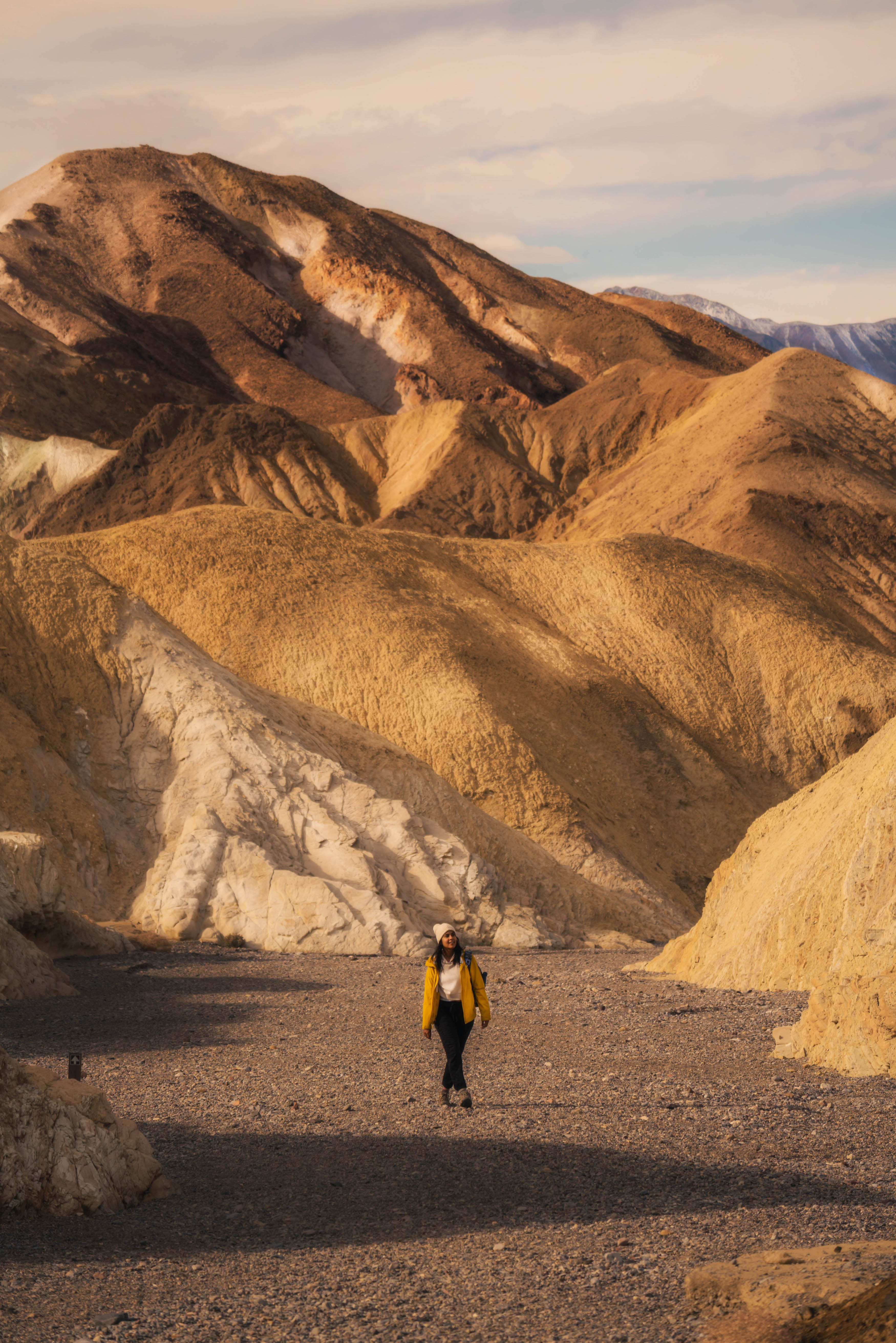

2. Twenty Mule Team Canyon: Close to Zabriskie Point lies a 2.8 mile one-way dirt road (with a sign that says Twenty Mule Team Canyon) that you can drive through. You’ll drive through a series of canyons and badlands. The name comes from the twenty mule team wagons that brought Borax from Death Valley to the rail lines to the south. Use one of the park’s pull-offs to park and go explore the labyrinth of canyons and badlands around the area. Make sure you have a GPS or compass to nav yourself once you’re in the badlands.



3. Darwin Falls: Darwin Falls is a great 2 mi roundtrip hike for families. It’s fairly easy and adventurous. You will find yourself crossing running rivers, climbing over rocks and even ducking under tree limbs before arriving at the waterfall.
4. Natural Bridge Canyon Trail: 4 miles south of the start of Artist’s Drive scenic loop road is the natural bridge formation. Just an easy 2mi short hike up the stream bed will lead you to the natural bridge.
5. Badwater Basin: This is a 5 mile hike if you want to hike to the other side of the basin toward the mountains. Otherwise you can just follow the boardwalk to the edge of the salt bed (about a mile or two) and walk around there for however long you wish.
6. Mosaic Canyon Trail: This is a 2.6 mile out and back trail that leads you into the heart of a canyon. After less than 1/4 mile on the trail, you’ll be enclosed by the smooth canyon walls. About 1.3 miles into the hike you’ll come across massive boulders and that’s the end of the hike.
7. Ibex Dunes Hike: These dunes are hard to get to. You will need a 4WD to get here. The dunes are steep so the hike is harder. If you hike till the end you will get to the talc mine. The total distance is approximately 6 miles.
8. Little Hebe Crater Trail: The hike here is a 2.2 mile out and back trail to what may seem like Mars! There’s actually three trails to choose from. The hike to Ubehebe Crater is 1 mile, while the hike around the crater is 3 miles and the hike to Little Hebe Crater is 2.2 miles as mentioned in the beginning.
When To Visit Death Valley National Park
When visiting Death Valley National Park, the ideal time is between January and March when the temperatures are not too hot in the day time. If you want to attempt any hikes, this is the time to go. No matter when you go, take sunglasses, a hat, a beanie and several layers as temperatures in the desert can vary greatly. As always, recreate responsibly and leave no trace.
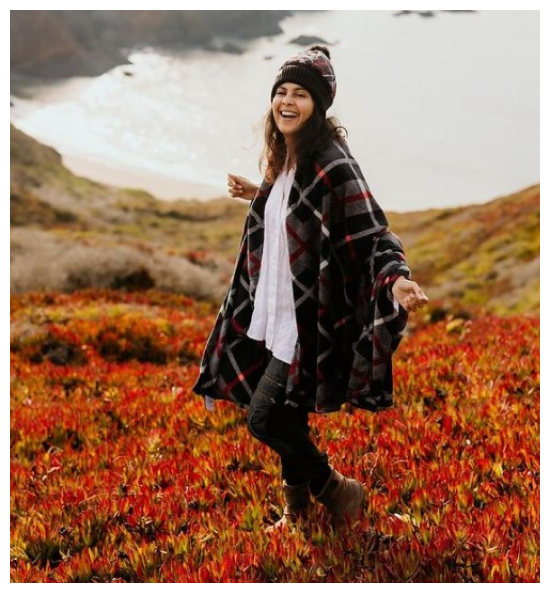
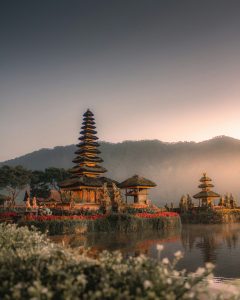
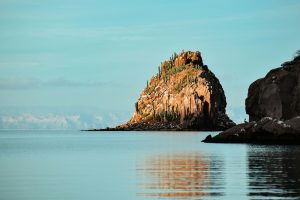
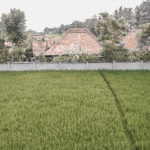
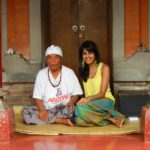

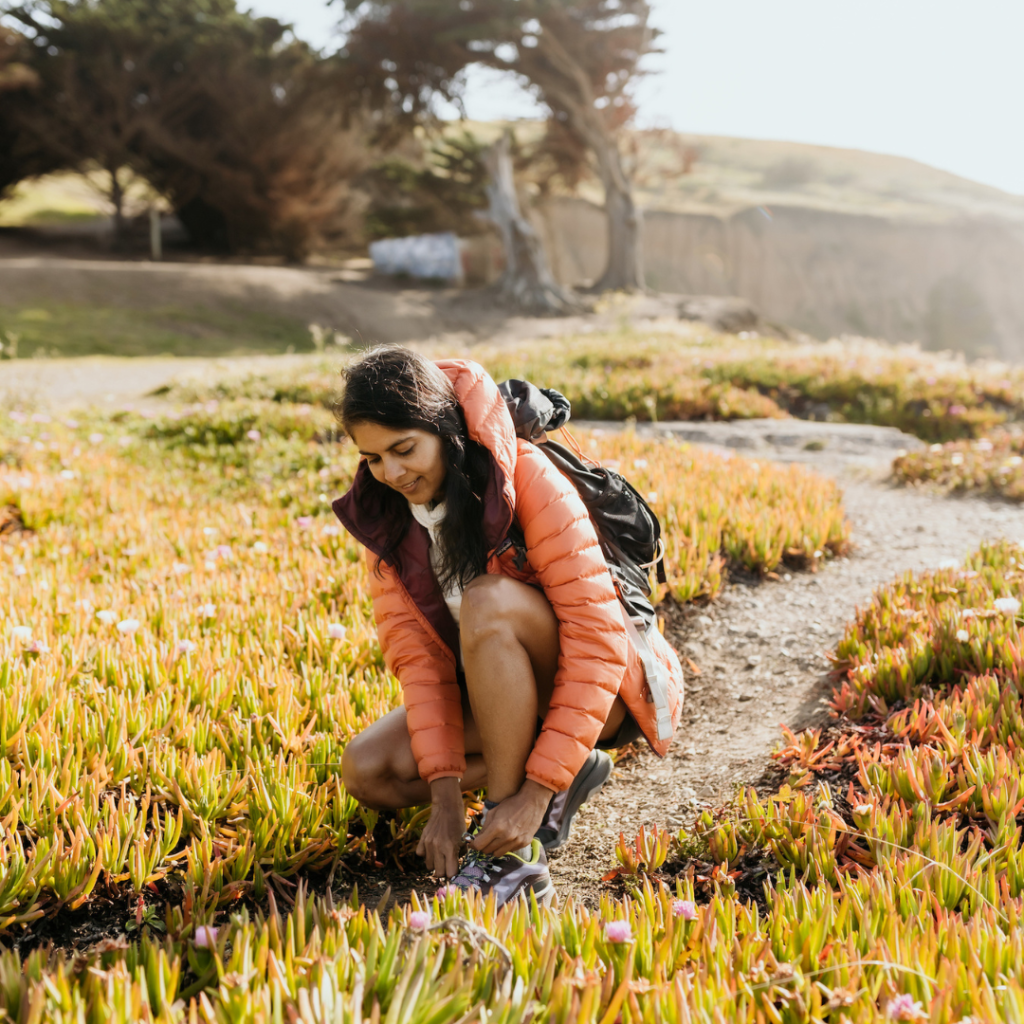
14 Responses
What a gorgeous and unearthly place. We will surely visit Death Valley one day!
That’s how I felt !!!! It’s a must see 🙂
This is a great guide. Very useful for anyone who wants to plan a visit to Death Valley. The vastness looks surreal. And the pictures, as always in your blog, are gorgeous.
Thank youuuuuu – I know I was floored myself by the vastness. No wonder Star wars was filmed here!
These are some amazing Pics of death valley!
Thank you Dilip, appreciate that 🙂
Super helpful guide and tips, Preethi! I’m heading there this weekend and will use your recommendations to plan my photography and hiking! Thanks so much for this fantastic info and your gorgeous pics of the area. I’m now even more excited!
awesome, hope this guide helped 🙂
I loved reading about your experience in Death Valley National Park. Your descriptions really made it come alive for me. Happy travels!
Yay so happy to hear that!!! Thank you for letting me know 🙂